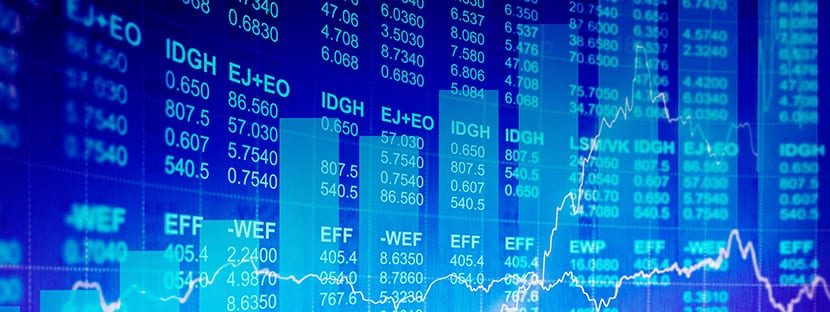
Given the great evolution and growth of financial investments to date and over the years, many investors have been using different financial instruments to achieve your goals to get benefits from investments in the financial sector.
In this post we will classify the most common and used financial derivatives today in the different world markets, since they are truly popular instruments and known to any investor in the investment sector.
Derivatives consist of financial instruments whose value is derived from the fluctuation or movement of prices in another asset, called the 'underlying asset'. The underlying with which it is operated is usually very varied or different, such as company shares, currencies, stock indices or raw materials, among many others available.
In short, a derivative is a forward contract with which the details and conditions are established at the time of the contract, while the effective exchange occurs or takes place at a future time or at the expiration of the contract.
A very important fact regarding these financial products is that are subject to leverageIn other words, to invest in them we will need a reduced amount compared to its normal acquisition, so the results of these will be multiplied both positively and negatively.
With a multitude of financial derivatives and their modalities, below we are going to focus and analyze the following types:
Futures
Futures are contracts or agreements where the exchange of a fixed amount of an asset established on a future date or specific expiration is defined, at a price agreed in advance or in advance. With futures we can adopt two types of positions:
- Long position: this is the one that accepts the futures buyerIn other words, once the contract or agreement has expired, you will be entitled to receive the underlying asset. In addition, there is the opportunity for the buyer to close his position in the market before maturity, in other words, selling the future before maturity and thus releasing the obligation.
- Short position: it is the one accepted by the futures seller, in other words, it is the one that undertakes to deliver the underlying at maturity at the price established or agreed in the contract. As in the previous case, you can also deliver that position before its expiration.
The orders
Warrants are a negotiable product that has an aggregate right to buy or trade a certain asset at a fixed price and a specific period. The purchaser of the warrant will have the right, but not the obligation, to buy or trade the underlying on the expiration date.

The exercise or not of the right will depend on the price at that time of the underlying asset with the exercise price.
- Purchase orders: the contract holder will buy the underlying asset at the price set in the exercise. In the event that the price is higher than that of the year, it will be settled with a credit to the holder for the resulting difference between both prices.
- Sale guarantees: the right holder will sell the underlying asset at the exercise price. In the event that the price is lower, the contract will be terminated by paying the difference between the two prices.
Depending on the exercise of the contract or the agreement, the warrants can be of the American type (it can be executed throughout the life of the warrant until expiration) or of the European type (it can be exercised only at maturity or expiration).
The alternatives
The alternatives consist of a contract or agreement, where the buyer acquires a right and the seller an obligation, of a certain amount on an underlying asset in a term or maturity stipulated in advance.
The premium is the price or commission that the buyer has for obtaining that right to purchase with the agreed characteristics. Once the expiration or execution period has arrived, both may value the option and exercise it or not depending on the agreed price and the current market price.
Depending on when the alternatives can be exercised, we also have two types, the European option (it can only be executed at the expiration of the option) and the American option (it can be exercised at any time until the option expires).
Binary options
If you still don't know What are binary alternatives pay attention to the following. Binary stocks are a type of financial derivative that has become very popular in recent years due to the ease of trading them (they also carry high risk).

Binary stocks are characterized by the fact that they are a type of investment that is based on all or nothingIn other words, if the trader reaches the forecast he made, he will take a percentage of the investment, but if the forecast is wrong, nothing will be taken.
These operations can be carried out in any sense of trade, in other words, buy ("CALL") or trade ("PUT"). Once the asset and the direction of the operation have been chosen, the option's expiration time must be selected (most brokers allow operations of 60 seconds, 5 minutes, etc.).
Exchanges
A swap is a financial contract between two parties in which they agree to exchange cash flows with a specific formula and specifications. This modality is made to measure or specific contracts to satisfy specific and complex needs.
The swap contracts or contracts have specifications on currencies, applicable interest rates and the date of exchange or expiration of the operation, as well as the formula and technical specifications agreed in the contract.
The types of The most common swaps are on the interest rate and the currency exchange rate., so this financial derivative is a complex product and not suitable for all types of investors, since it implies a high risk and exposure to financial market.
Contracts for difference or CFD's
Contracts for Difference or CFDs (Contracts for Difference) are agreements in which the investor and a financial institution agree to exchange for the difference between the purchase and sale price of a certain underlying asset, for example, shares, indices. stocks, raw materials and interest rates, among others.

As these are non-specific products or models, investors should consider all the particularities and risks that they may present with each underlying asset and each particular transaction. This financial derivative also uses leverage, so we must consider the risk of existing, since it can cause losses greater than the capital deposited in the broker.






